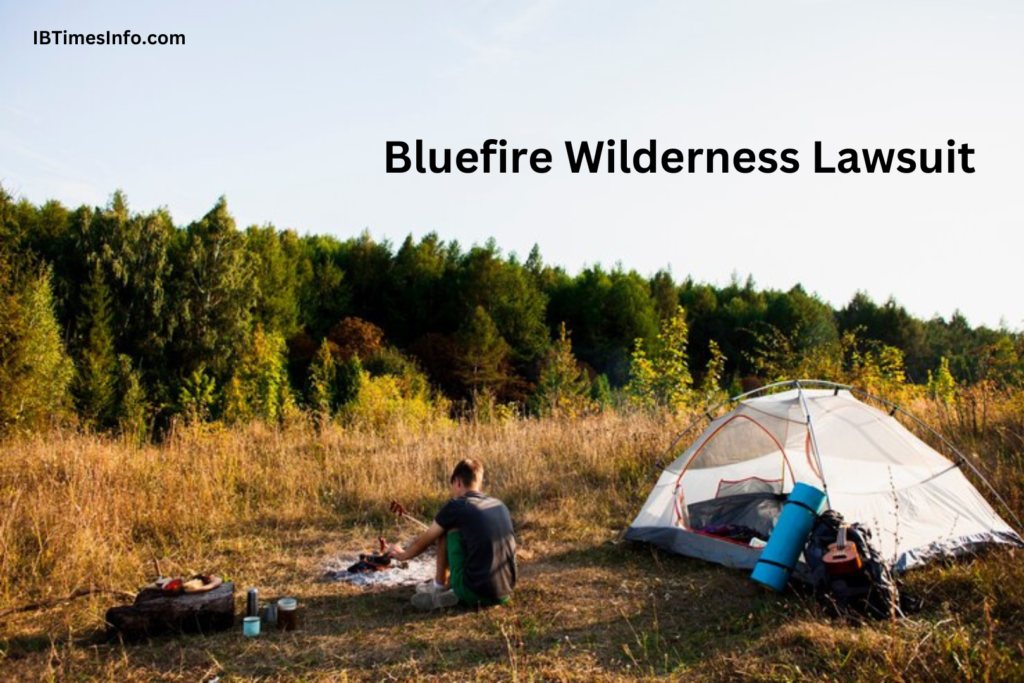Introduction to Bluefire Wilderness Lawsuit
The Bluefire Wilderness lawsuit has captured the attention of many, raising critical questions about safety and accountability in wilderness therapy programs. As parents seek solutions for their teens struggling with behavioural challenges, stories emerging from this legal battle are causing concern across communities. allegations against one program have sparked a firestorm of debate. What’s happening at Bluefire Wilderness? And what do families need to know as they navigate these turbulent waters? Let’s dive into the latest developments surrounding the Bluefire Wilderness lawsuit and its implications for students and families.
The Allegations Against Bluefire Wilderness
The allegations against Bluefire Wilderness have raised serious concerns within the community. Parents and advocates are voicing their fears regarding the treatment of participants in their programs.
Reports suggest incidents involving emotional distress among students. Some former attendees allege that staff members used harsh disciplinary measures, which could lead to long-term psychological effects.
Furthermore, there are claims regarding inadequate supervision during challenging outdoor activities. These accounts indicate a potential failure in ensuring participant safety while navigating complex wilderness environments.
Witness testimonies highlight troubling interactions between staff and students. Many describe experiences that left them feeling isolated rather than supported.
As these allegations unfold, they spotlight broader issues within the teen therapy landscape. The implications affect Bluefire Wilderness and similar programs nationwide.
Updates on the Legal Proceedings

Recent developments in the Bluefire Wilderness lawsuit have captured significant attention. Legal representatives for both sides are actively preparing their arguments, with hearings scheduled over the coming months.
Documents filed include testimonies from former participants and staff members. These accounts aim to shed light on the alleged practices within Bluefire’s programs.
Discovery is also underway, where each party exchanges evidence relevant to the case. This phase could reveal crucial insights into operational protocols at Bluefire Wilderness.
The court has set deadlines for motions that will further shape how this situation unfolds. Observers are keenly watching these updates as they may influence public perception and trust in wilderness therapy programs nationwide. The people affected by these proceedings remain anxious, hoping for clarity amidst ongoing uncertainty about what lies ahead.
Impact on Students and Families Involved in Bluefire Wilderness Programs
The Bluefire Wilderness lawsuit has left many families grappling with uncertainty. Parents are worried about the safety and well-being of their children involved in these programs.
Students also face emotional turmoil as they navigate this turbulent situation. They may question the effectiveness of their wilderness experiences amid allegations of misconduct.
Trust is a massive component in therapeutic settings, and when it is shaken, it can have lasting effects. Families might need to evaluate the support systems to guide their children toward healing.
Both students need clarity and assurance as they continue on their recovery journeys. Voices must be heard throughout this process for genuine change within such programs.
Other Similar Cases in the Teen Wilderness Therapy Industry

The teen wilderness therapy industry has faced scrutiny beyond Bluefire Wilderness. Other programs have been implicated in lawsuits and allegations of misconduct.
One notable case involved a program where parents claimed their children were subjected to harsh treatment and neglect. This sparked debates about the ethical standards within these types of therapies.
Additionally, reports surfaced from another organization regarding injuries sustained during outdoor activities. Families voiced concerns over inadequate supervision and safety protocols, raising questions about how these programs operate.
These incidents highlight a broader issue within the wilderness therapy sector. Transparency and accountability are critical as families seek therapeutic options for their children.
As more stories emerge, the need for regulation becomes increasingly apparent. Ensuring that kids receive appropriate care is essential for fostering trust in such programs in the future.
Tips for Parents When Choosing a Wilderness Therapy Program for Their Child
Choosing a wilderness therapy program for your child is a significant decision. Start by researching the facility’s credentials and staff qualifications. Look for programs licensed by relevant authorities that ensure safety and quality.
Consider the therapeutic approach used. Different programs may focus on various methodologies, so it’s crfindingat aligns with your child’s needs.
Asking about their safety protocols and emergency procedures is crucial is crucial. A reputable program should be transparent about how it handles crises.
Talk to other parents who have enrolled their children in these programs. Their experiences can provide valuable insights into what you might expect.
Visit the facility if possible; seeing the environment firsthand can help ease concerns. Trust your instincts—if something doesn’t feel right, explore other options available for teens for teens in this field of therapy.
The Future of Bluefire Wilderness and Overall Safety in Teen Therapy Programs
The future of Bluefire Wilderness remains uncertain amid ongoing legal battles. As the lawsuit progresses, many are watching closely to see how it will reshape the organization’s practices.
Safety in teen therapy programs is under increased scrutiny. Parents and guardians now demand transparency regarding treatment methods and staff training.
In light of recent events, wilderness therapy programs may need to adopt stricter safety protocols. This could involve comprehensive background checks for staff and enhanced monitoring of student well-being.
Such changes can foster a more secure environment for participants. Increased regulation may also encourage organizations like Bluefire Wilderness to prioritize ethical standards over profit.
As these developments unfold, families seeking help are urged to stay informed about their options. Open conversations about safety should guide choices when selecting a program for their children.
FAQs
What is the Bluefire Wilderness lawsuit about?
The lawsuit involves allegations of negligence and mistreatment at Bluefire Wilderness. Families are concerned about the safety and care provided during their children’s therapy programs.
Who filed the lawsuit against Bluefire Wilderness?
Families of former students have come forward, seeking accountability for incidents they claim resulted in emotional and physical harm to their children while enrolled in the program.
How has Bluefire responded to these allegations?
Bluefire Wilderness has issued statements denying wrongdoing. They emphasize that they adhere strictly to industry standards to ensure student safety and well-being.
What should parents consider when choosing a wilderness program?
Parents should investigate accreditation, staff qualifications, reviews from other families, and transparency regarding treatment methods. Gathering as much information as possible can help them make an informed decision.
Can I stay updated on legal developments related to this case?
Yes, news outlets often cover significant updates about ongoing lawsuits. Additionally, following advocacy groups focused on youth mental health may provide insights into broader issues surrounding wilderness therapy programs.
Conclusion: Bluefire Wilderness Lawsuit
The unfolding situation surrounding the Bluefire Wilderness lawsuit has sparked significant interest and concern among parents, students, and stakeholders in the wilderness therapy community. Allegations against the program raise essential questions about safety standards, treatment methods, and overall accountability.
As legal proceedings progress, updates continue to shape perceptions of Bluefire Wilderness and similar programs nationwide. Families grapple with uncertainty as they navigate their children’s experiences within these therapeutic environments. This case highlights a critical moment for transparency and reform in an industry that serves vulnerable youth.
Parents seeking wilderness therapy options take this opportunity to evaluate programs based on credible information carefully. It is essential to prioritize safety measures, staff qualifications, and feedback from former participants or families when making decisions regarding treatment for their children.
What lies ahead for Bluefire Wilderness remains uncertain but could set precedents affecting all teen therapy programs moving forward. The conversation around ethical practices in this field is more vital than ever as we advocate for improved safeguards protecting our youth during challenging times.
This ongoing case serves as a reminder that while wilderness therapy can offer transformative experiences for teens facing difficulties, it must be executed with utmost care and responsibility—ensuring that every child receives compassionate support tailored to their needs.
Also read: Cowordle



